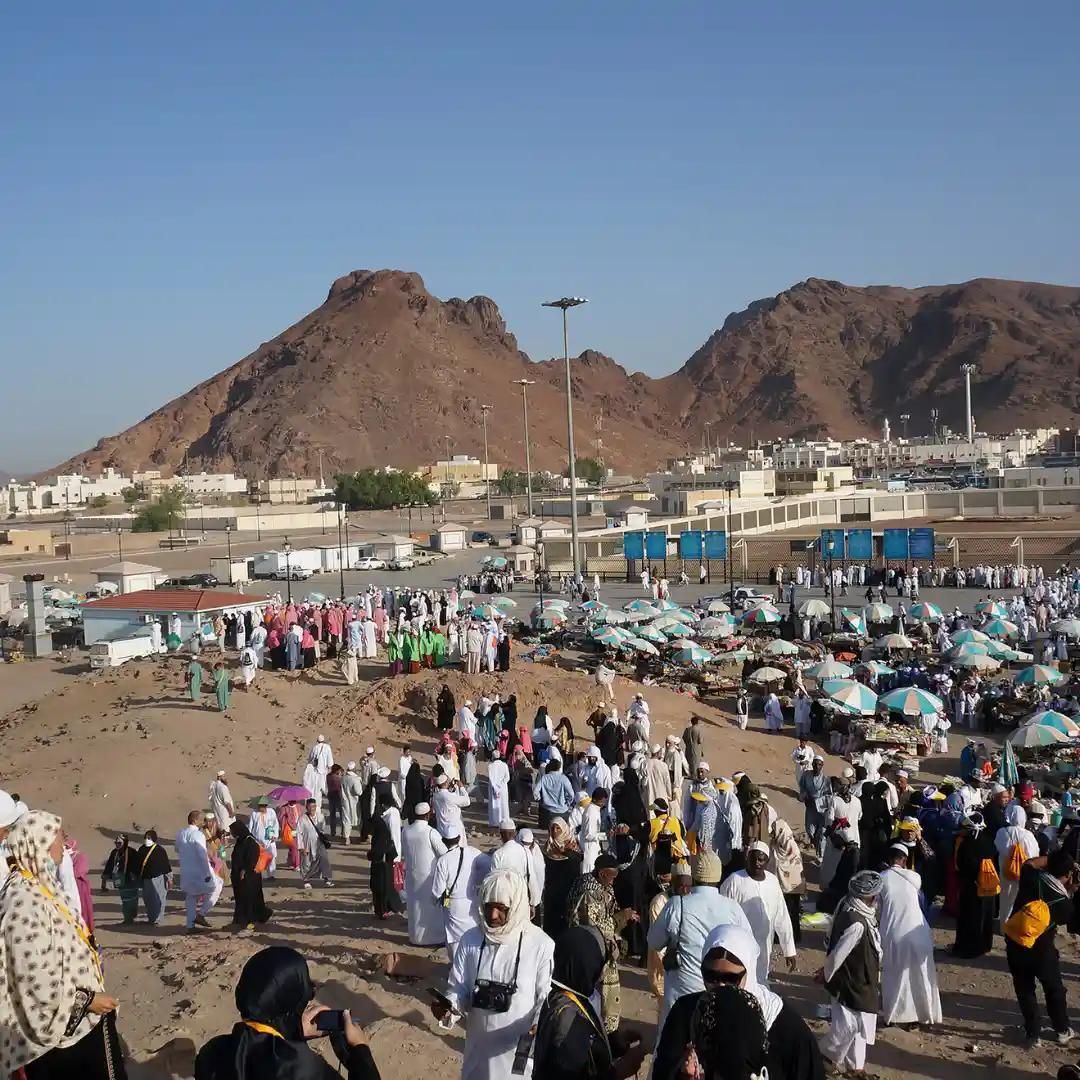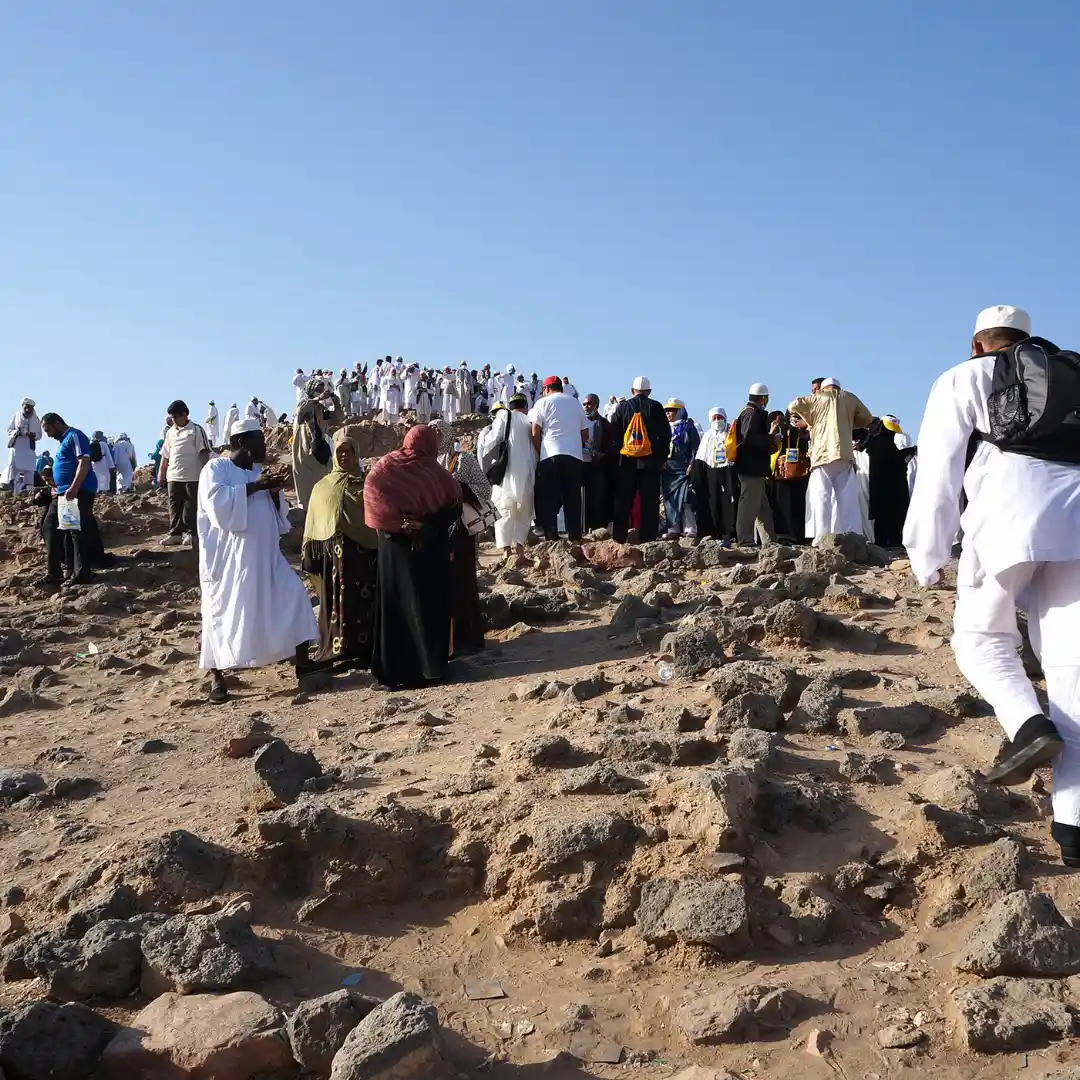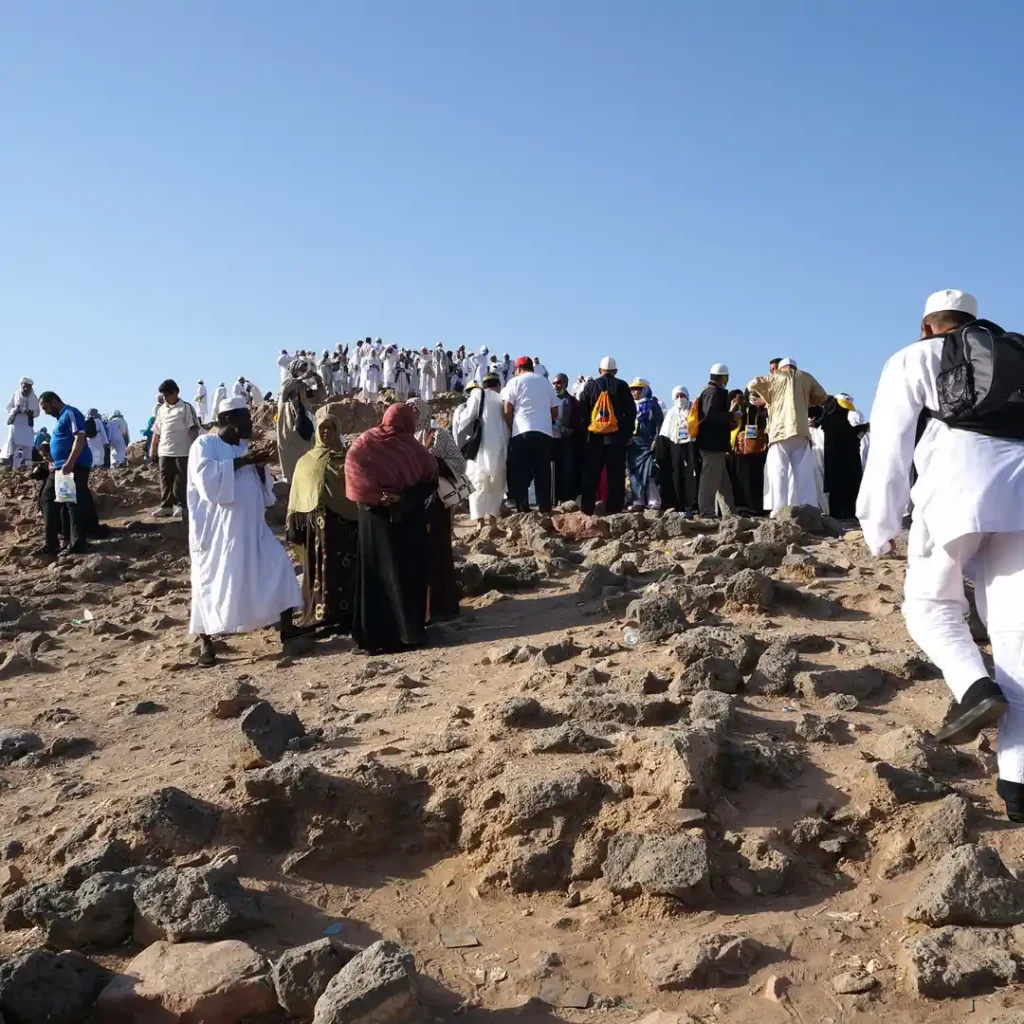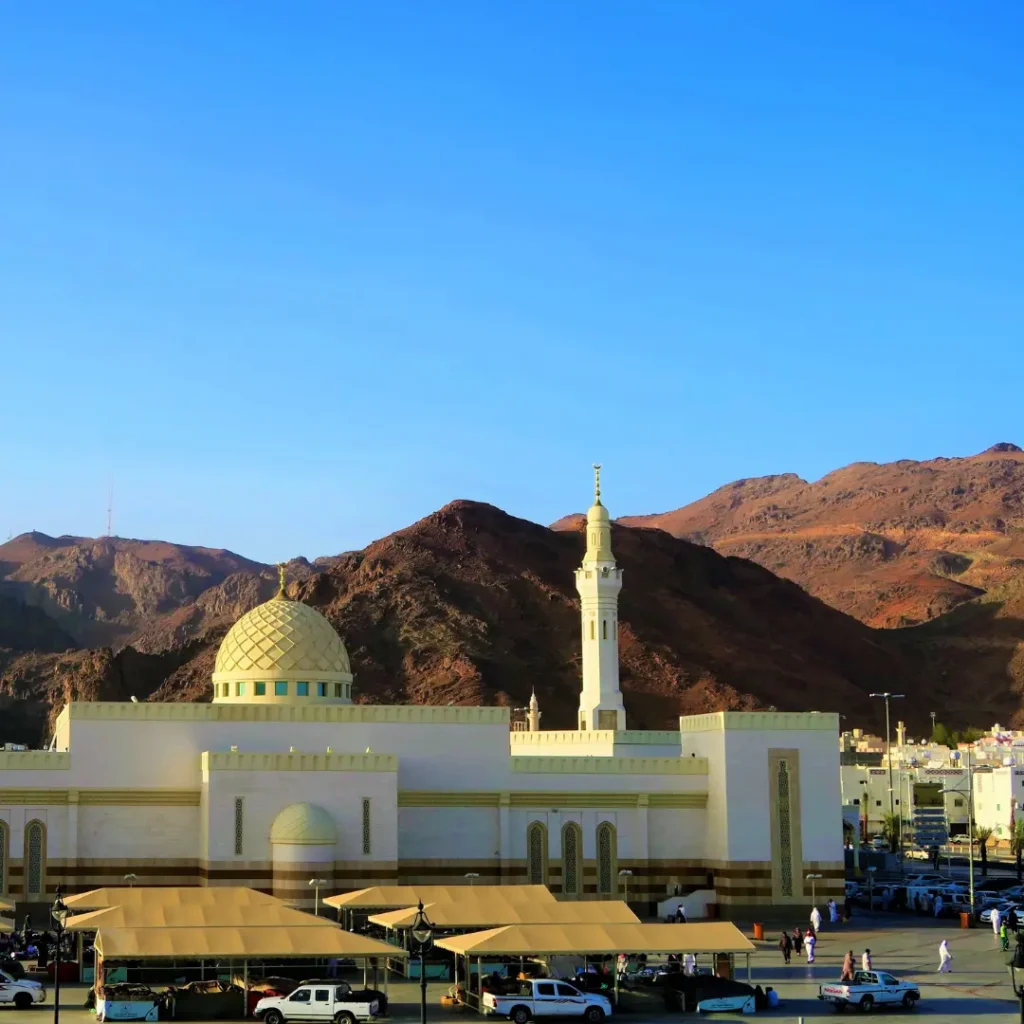Jabal Uhud & The Martyrs’ Graveyard
A Field of Sacrifice and Timeless Lessons
Jabal Uhud is not merely a mountain; it is a landmark of prophetic love, a battlefield of immense sacrifice, and a source of the most profound lessons for the Muslim Ummah. It was on the plains before this reddish mountain that the second major battle in Islam, the Battle of Uhud, took place in the 3rd year of Hijrah.
This site is forever sanctified by the blood of 70 of the Prophet’s (PBUH) most beloved companions, including his uncle, Hamza ibn Abd al-Muttalib (RA), the “Lion of Allah.” A visit here is a poignant and essential part of any journey to Madinah.

IMPORTANT NOTE: Etiquette at the Graveyard
The Graveyard of the Martyrs of Uhud (Maqbarah Shuhada Uhud) is a place of deep solemnity and reflection. The Sunnah when visiting is to:
- Offer Salam (greetings of peace) to the martyrs.
- Make sincere Dua (supplication) for them.
It is strictly forbidden to perform any acts of worship directed at the graves, such as wiping, kissing, or making Tawaf (circumambulation) around them. The intention is to pray for them, not to them.
The Spiritual Significance:
A Mountain of Love, A Battle of Trials

The Battle of Uhud (Ghazwa Uhud)
After their defeat at Badr, the Quraish returned with a larger army seeking revenge. The Prophet (PBUH) strategically positioned his forces, placing 50 archers on a small hill (Jabal ar-Rumah) with strict orders not to leave their post under any circumstances.
Initially, the Muslims gained the upper hand. However, believing the battle was won, the majority of archers disobeyed the Prophet’s clear command and descended the hill to gather the spoils of war. Seeing this opening, the Quraish cavalry, led by Khalid ibn al-Walid (before he embraced Islam), flanked the Muslim army from the rear.
The tide turned dramatically. The Muslims suffered heavy losses, the Prophet (PBUH) himself was injured, and his beloved uncle Hamza (RA) was martyred. The battle serves as a timeless and powerful lesson on:
- The critical importance of obedience to the Prophet (PBUH).
- The dangers of worldly distractions.
- The reality of facing trials and hardship with patience and faith.
Exploring the Sites of Uhud
Jabal Uhud (The Mountain of Uhud)The majestic mountain itself stands as a silent witness to history. Visitors can view its distinctive reddish rock and reflect on the Prophet’s (PBUH) love for it.
Maqbarah Shuhada Uhud (The Martyrs’ Graveyard)This is the most solemn part of the visit. A walled enclosure contains the blessed graves of the 70 companions who achieved martyrdom. Visitors stand at the perimeter to offer their Salam and make Dua, with a special thought for the master of martyrs, Sayyiduna Hamza (RA).
Jabal ar-Rumah (Archers’ Hill)This small hill stands in front of the main mountain. Visitors can climb it to get a panoramic view of the entire battlefield. Standing here is a powerful experience, allowing one to visualize where the archers were stationed and to reflect on the pivotal lesson of obedience learned on this very spot.

Gallery: Jabal Uhud – The Mountain That Loves Us






Practical Information and Logistics

Travel Time from Masjid an-NabawiLocated just north of Madinah, Uhud is about a 20 to 25 minute drive.
Best Time to VisitThe area is open and exposed. It is highly recommended to visit in the early morning (after Fajr) or late afternoon to avoid the intense midday heat.
What to BringWater, sun protection (hats, sunglasses), and comfortable footwear for climbing Archer’s Hill.
Pilgrims Reflect on Their Visit to Jabal Uhud
Standing before Jabal Uhud filled my heart with awe. You feel the love of the Prophet (SAW) in the air. It’s not just a place, it’s a lesson in obedience and patience.
Zainab Al-Harthy – Oman
The graves of the martyrs remind you what true sacrifice means. Saying Salam to Sayyiduna Hamza (RA) brought tears to my eyes. I’ll never forget it.
Yusuf Patel – United Kingdom
Climbing Archer’s Hill and hearing the story of Uhud gave me chills. It made the Seerah come alive before my eyes. Truly a must-visit for every pilgrim.
Aisha Rahman – Indonesia

